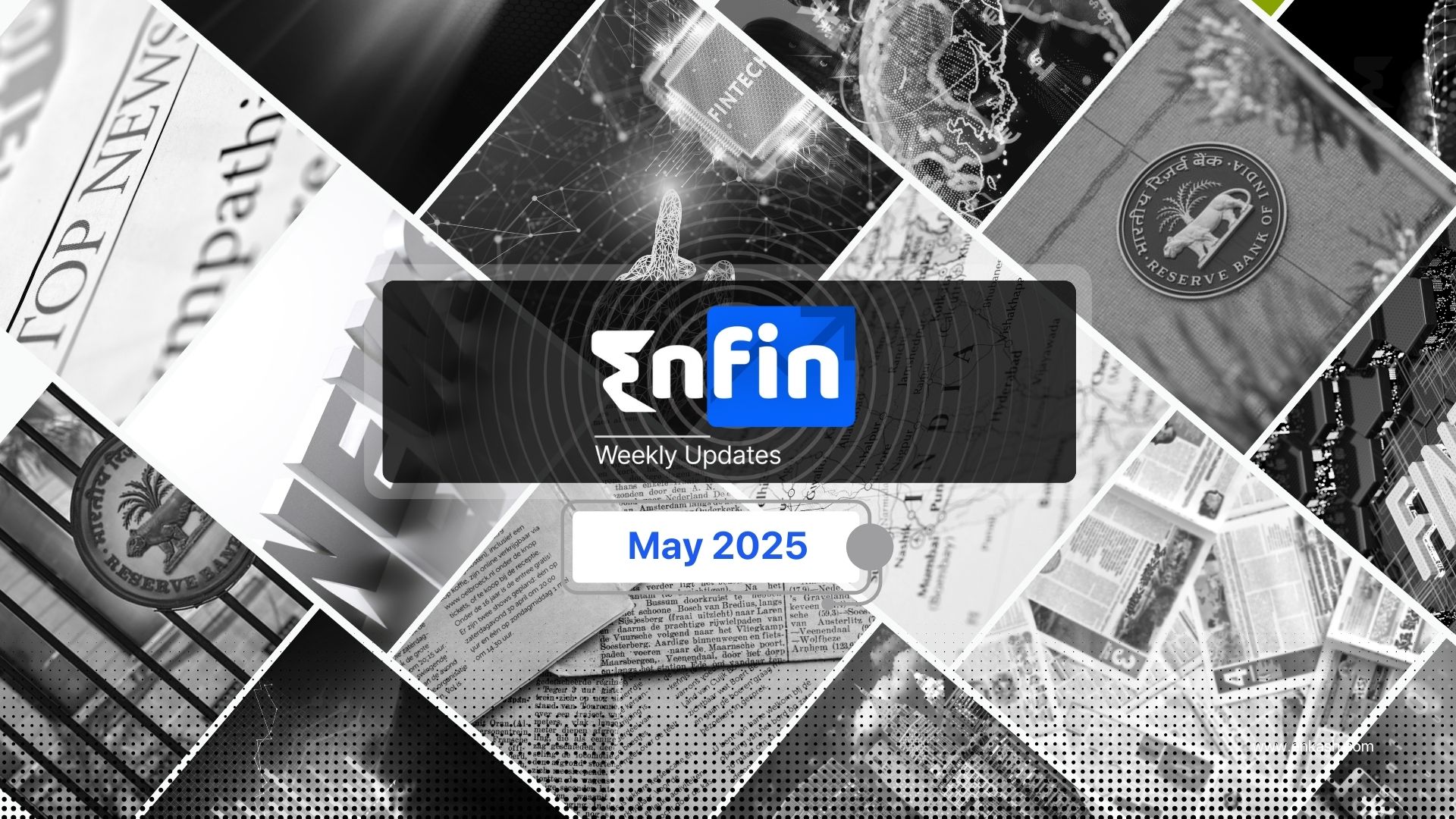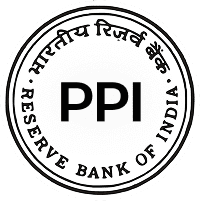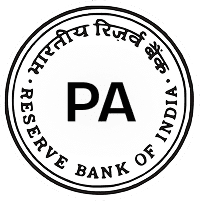EnFin is a curated fresh source of the latest happenings in the fintech industry. It has been designed for those who are always on the move and want to stay abreast with the new developments in the industry.
It covers everything from updates to new developments, announcements, and amendments in the fintech industry.
RBI Mandates ‘.bank.in’ Domain for Safer Digital Banking by 2025
RBI aims to mandate the ‘.bank.in’ domain by October 31, 2025. This move is intended to curb phishing, enhance digital banking security, and build customer trust by ensuring all Indian bank websites are easily identifiable and fraud-resistant through a verified domain.
Banks have been told to contact IDRBT at [email protected] to learn about the registration and domain migration process.
Originally posted on Times of India
RBI Relaxes Final LCR Rules, Easing Liquidity Pressure for Lenders
RBI relaxes LCR norms, helping boost bank credit growth by 1-1.5%, release ₹2.5–3 lakh crore in liquidity, and improve net interest margins, as banks can now deploy more funds into higher-yielding loan assets.
Originally posted on NDTV Profit
BHIM Unveils UPI Circle: Enables Secure Payment Delegation
NPCI BHIM Services has launched UPI Circle—a BHIM app feature allowing users to delegate UPI payments to up to five trusted people. Every transaction requires real-time approval, promoting secure, shared financial access for families, seniors, and small businesses.
The important part of this feature is that there will be no transaction until the primary user approves it with their UPI PIN. The primary user will be able to see all the transactions, ensuring transparency and complete control. It aims to support senior citizens and stay vigilant with children to manage their expenses. At the same time, small businesses can allocate partial access to their staff for smooth operations.
Originally posted on Business Standard
A New Tech Framework with Netbanking 2.0 is Coming Soon
NPCI’s subsidiary NBBL is developing a new switch, Netbanking 2.0, to simplify net banking with a completely new tech framework. Expected to go live in 3-4 months, it aims to boost digital banking efficiency beyond existing systems like IMPS (Immediate Payment Service).
This framework will not facilitate any existing payment system, however, it will focus on creating a new system altogether.
Originally posted on Business Standard
Payment Fraud in 2024 hit 79% of organizations: AFP Report 2025
In 2024, 79% of organizations were partially or fully victims of payment fraud, with 22% recovering their losses, according to AFP’s 2025 report. The report showcases increasing financial vulnerabilities and the urgent need for stronger fraud prevention.
Originally posted on Bank Automation News
RBI’s Draft Norms to spark 40% surge in Co-Lending
RBI’s draft norms on co-lending may boost volumes by 40%, prompting more NBFC-NBFC partnerships. While the CLM-2 model may be restricted, broader eligibility and clarity could expand co-lending into personal loans and underserved segments, driving collaboration, compliance, and capital efficiency.
Originally posted on Business Line
Quick Commerce Surge Sparks Regulatory Alarms
Quick commerce’s rise with 2,000+ dark stores from Blinkit, Zepto, Swiggy Instamart, and others has triggered the closure of 2 lakh kirana shops, according to AICPDF. Predatory pricing, hyper-fast delivery, and D2C supply chains are disturbing traditional retail, prompting calls for urgent regulation.
The quick commerce aims to penetrate deeper into smaller cities, creating a threatening situation for local vendors.
Originally posted on ABP Live
NPCI Planning For Another 300 Mn UPI Users
NPCI plans to onboard 200–300 million new UPI users to deepen financial inclusion, targeting children and household staff. This comes as UPI hits 18.3 billion transactions in March, while NPCI also explores multilingual, chat-based features and global expansion.
It has also taken other initiatives to enable cross-border payments, including the RBI partnering with central banks of Malaysia, Philippines, Singapore, and Thailand to link UPI with their payments systems.
Originally posted on INC42
UPI Outages Prompt NPCI-Bank Collaboration for Lasting Fix
In response to recurring UPI outages, NPCI and major banks are working on a durable solution, including a new monitoring mechanism for API calls. This aims to prevent misuse and ensure smoother, more reliable payment experiences.
Originally posted on Business Standard
Silence from UPI Giants as MDR Debate Heats Up; Consumer Impact Looms
As the call to reinstate the Merchant Discount Rate (MDR) on high-value UPI transactions gains traction, major players have remained notably silent. However, industry insiders are raising concerns that if MDR is imposed, large merchants might pass the cost on to end consumers, potentially impacting the very affordability that drove UPI’s massive adoption in India.
Source: INC42
Aadhaar App Adds Face ID, Ends Need for Paper Cards
Onboarding and verification just got smoother. The new Aadhaar app enables instant, paperless identity checks with Face ID – ideal for fintechs and service providers seeking frictionless KYC with privacy-first protocols.
Originally posted on Business Today
UPI Limits to Vary by Merchant; P2P Caps Unchanged
Greater flexibility for merchants to accept high-value payments will accelerate enterprise adoption of UPI. With added bank-level controls and security layers, this move sets the stage for safe and scalable digital payments.
Originally posted on Business Standard
RBI Rolls Out 6 Reforms: UPI, Lending, Credit Rules
A sweeping update to India’s financial framework. From streamlined asset securitization to harmonized credit rules, these moves open doors for greater innovation, lending efficiency, and market depth for fintech and banks alike.
Originally posted on The Tribune
Fintech Leaders Launch India Fintech Foundation (IFF)
With industry leaders rallying to form a self-regulatory body, the ecosystem moves toward greater standardization, innovation safeguards, and proactive compliance. A strong step towards long-term sustainability.
Originally posted on INC42
Govt Launches Helpline for Startups to Report & Reform
A direct line to regulators could reshape India’s startup landscape. This helpline, paired with new Fund-of-Funds allocations, aims to cut red tape and fuel deeptech innovation in AI, robotics, and more.
Originally posted on INC42
India Ranks #3 in Global Fintech Funding for Q1 2025
Strong late-stage funding signals sustained investor trust despite global pressures. UPI’s global play and fintech resilience continue to position India as a frontrunner in financial innovation and capital attraction.
Originally posted on Zeebiz
ATM Charges Hike: Big Banks Gain, Small Banks Struggle
Starting May 1, ATM transaction fees will rise from ₹17 to ₹19 due to an increase in interchange fees. This shift benefits large banks with extensive ATM networks while smaller banks bear higher costs, potentially impacting their profitability and customer convenience.
Originally posted on ET BFSI
UPI Outages Expose Network Vulnerabilities
With two outages in a week, NPCI attributes UPI disruptions to “increased latency.” As India’s most widely used payment system, these failures raise concerns over network stability, urging swift action from banks and regulators to ensure seamless transactions.
Originally posted on INC42
India Pushes for UPI’s Global Dominance
The government is lobbying FATF to relax compliance rules for UPI’s international expansion, challenging exemptions granted to SWIFT, Visa, and Mastercard. A favorable ruling could accelerate UPI’s global adoption, making it a serious competitor in cross-border payments.
Originally posted on INC42
Startup Policy Forum backs PCI’s call for MDR on UPI & RuPay
With UPI incentives slashed by 60%, the Payments Council of India (PCI) and Startup Policy Forum (SPF) are pushing for the return of MDR on large merchants. The move aims to ensure the long-term viability of digital payments while protecting small businesses from added costs.
Originally posted on INC42
Credit Card Spending Drops 9% Amid Caution
Credit card spending fell 9% month-on-month to ₹1.67 trillion, the lowest since July 2024. A decline in PoS and online transactions, coupled with rising default concerns, slowed new card issuance, particularly in smaller cities.
ICICI Bank saw the sharpest decline, while HDFC Bank, Axis Bank, and IndusInd Bank witnessed traction. The credit card issuance trend was slow considering the misselling in smaller cities.
Originally posted on ET BFSI
Stay updated with industry fresh updates from EnFin.








